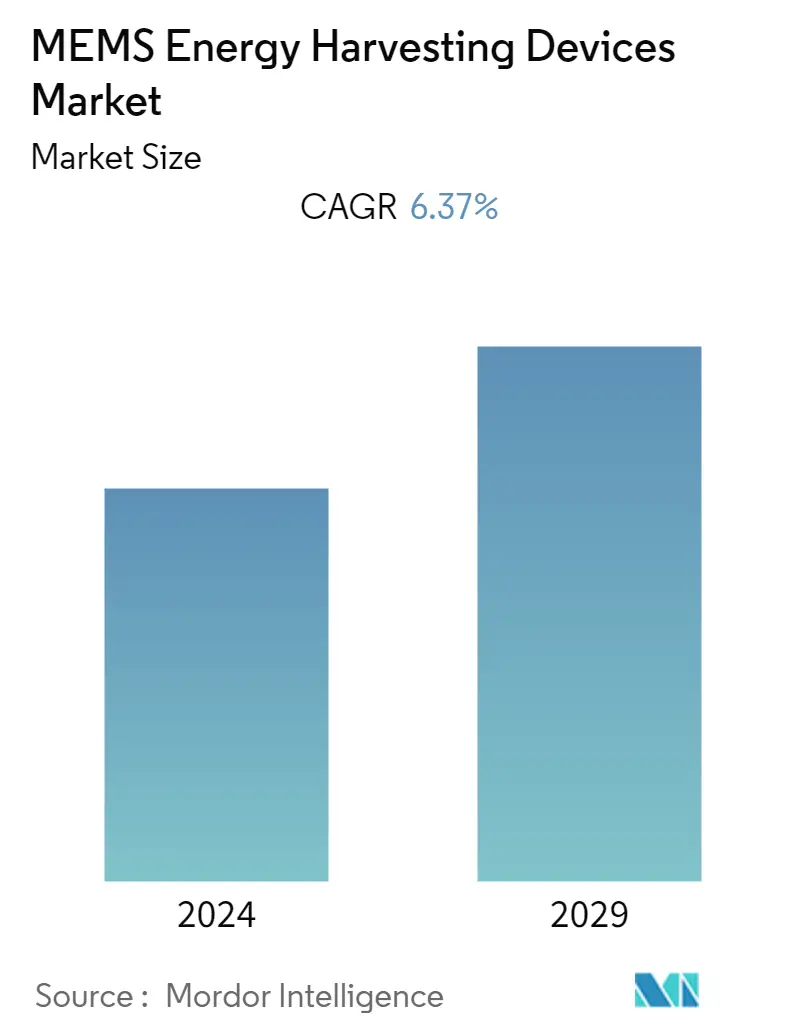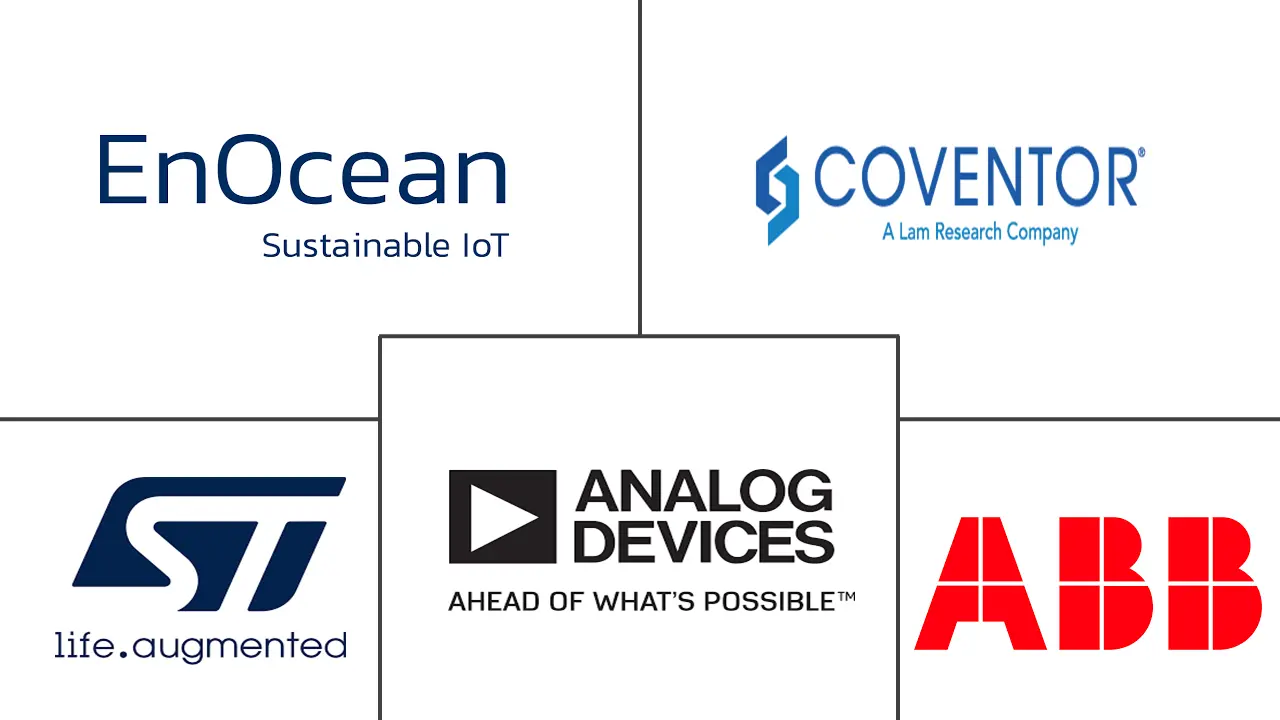Market Size of MEMS Energy Harvesting Devices Industry

| Study Period | 2019 - 2029 |
| Base Year For Estimation | 2023 |
| CAGR | 6.37 % |
| Fastest Growing Market | Asia Pacific |
| Largest Market | Europe |
| Market Concentration | Medium |
Major Players
*Disclaimer: Major Players sorted in no particular order |
Need a report that reflects how COVID-19 has impacted this market and its growth?
MEMS Energy Harvesting Devices Market Analysis
The MEMS energy harvesting devices market size was valued at USD 66.06 million the previous year and is expected to register a CAGR of 6.37%, reaching USD 92.62 million over the forecast period.
- Energy harvesting is used for decades for bicycle dynamos or solar panels. However, this technology is a revolution with staggering applications in building and industry automation, automotive vehicles, smart cities, and security systems. Notably, governments and favorable public initiatives are the major drivers for energy harvesting demand growth as public actors consider energy harvesting a crucial tool for meeting the increasing energy demand and saving energy. In addition, Big Data and IoT technologies led to autonomous energy-harvesting devices that require less maintenance and are easier to install than batteries.
- Moreover, the market for commercial building automation is also booming and is expected to experience significant growth with rising smart city initiatives. Energy harvesting wireless solutions find surging applications in building and home automation owing to their high cost-saving potential in installation and maintenance. Compared to copper wiring or batteries, energy-harvesting wireless technology is the ideal communication standard to interconnect thousands of building devices and find new monitoring and control applications.
- Microelectromechanical systems (MEMS) are considered the most suitable technology to realize IoT-sensing nodes. It facilitates the integrated fabrication of sensors/actuators, electronic circuits for information processing and radio frequency communication, antennas, and energy harvesters on a single chip or package. They may interact with biological, chemical, and thermal phenomena, including fluid interaction. At the same time, these devices usually interact with non-electromagnetic fields and forces, such as mechanical forces, piezoelectric and thermoelectric forces, among others. It promoted MEMS technology as an excellent tool for miniaturizing energy harvesters.
- In recent years, much development is made in energy harvesting from mechanical vibrations, thermal gradients, electromagnetic radiations, and solar radiations. This progress is made to provide alternative power sources to operate portable and personal gadgets instead of traditional batteries. As a result, the creation of ultra-low-power electronic devices became one of the main challenges likely to limit the adoption rate of MEMS-based harvesting devices.
- COVID-19 accelerated the pace towards a more patient-centric approach and increased the need for remote patient monitoring, including telehealth, point-of-care devices, and wearables. There is a growing demand for energy harvesters' wearables owing to their ability to track peoples' temperature and blood pressure. This trend created new opportunities in the wearables market, as well as for integrated MEMS sensors, such as pressure, inertial, microphones, thermopiles, etc.
